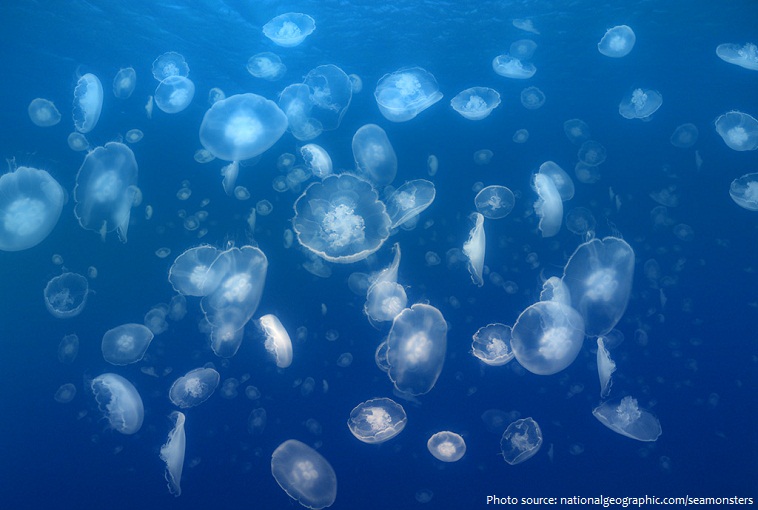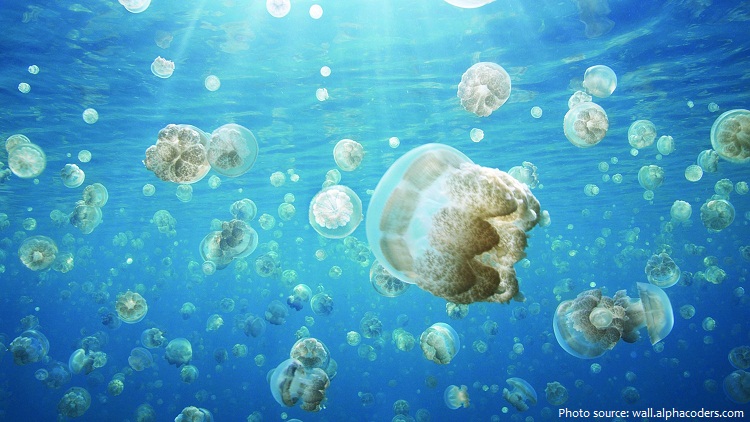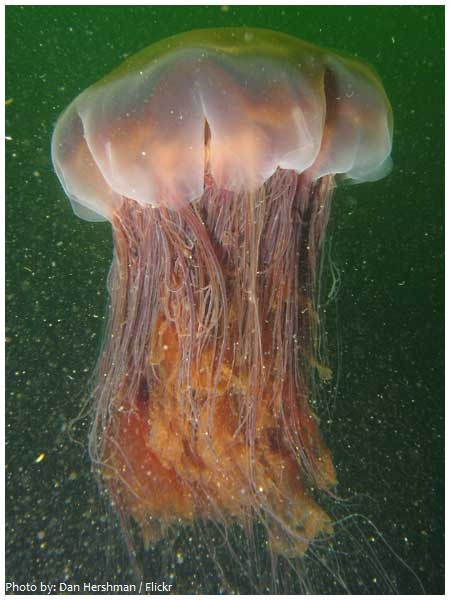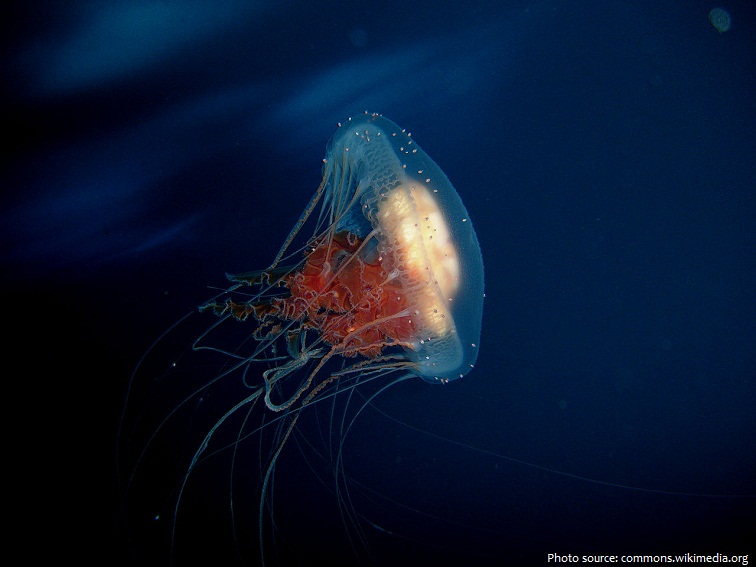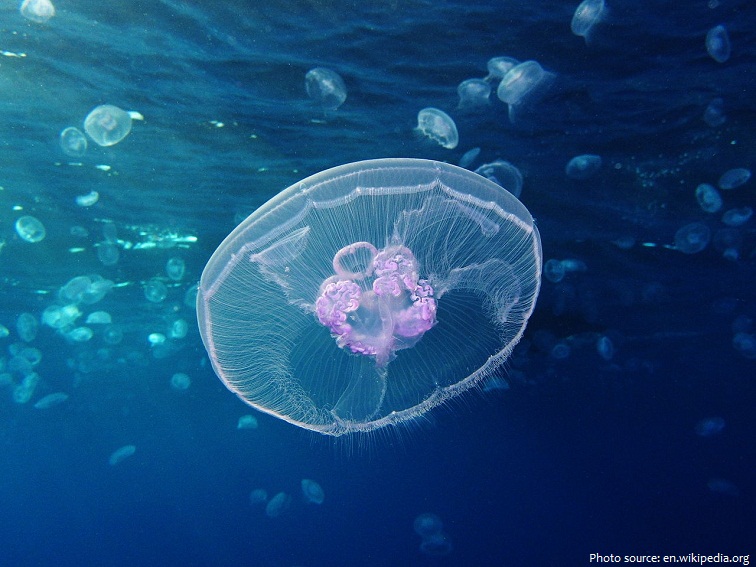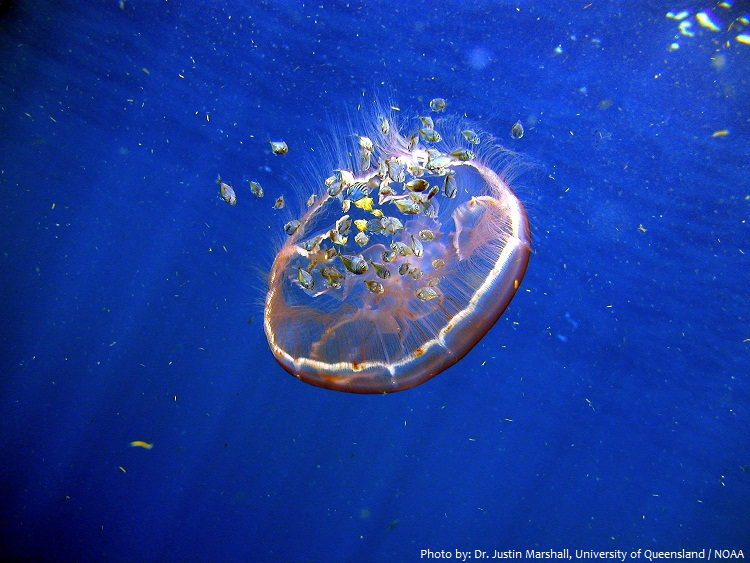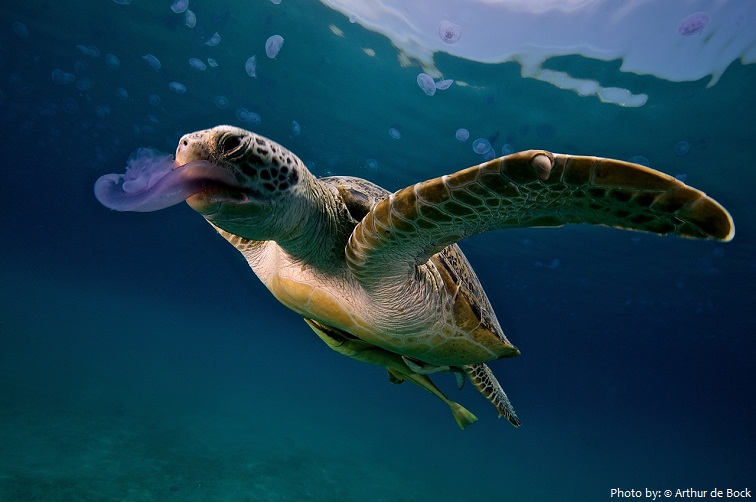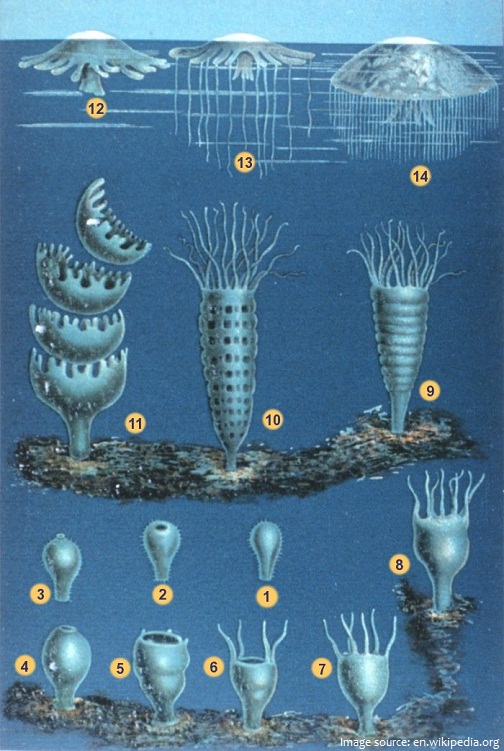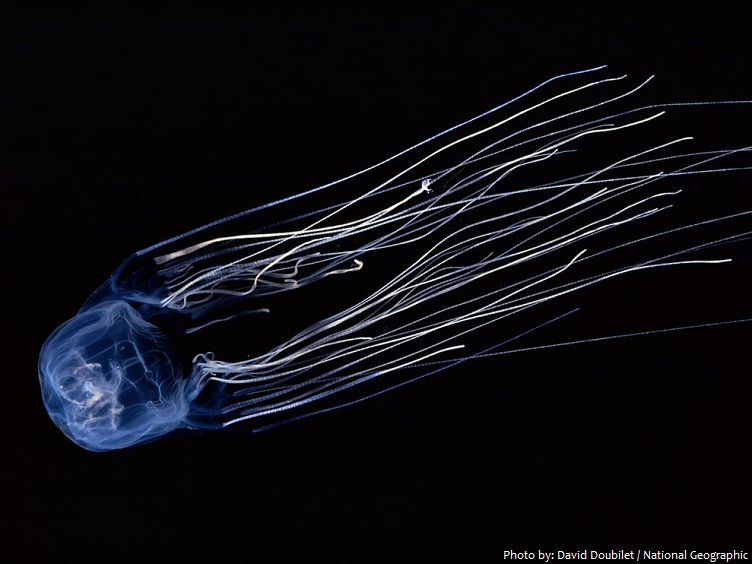Jellyfish or jellies are marine invertebrates of of the phylum Cnidaria.
They are typified as free-swimming marine animals consisting of a gelatinous umbrella-shaped bell and trailing tentacles.
Jellyfish are not fish and they are related to corals and anemones.
Jellyfish have roamed the seas for at least 500 million years, and possibly 700 million years or more, making them the oldest multi-organ animal.
Jellyfish are found in every ocean, from the surface to the deep sea. They are even found in some freshwater lakes and ponds.
Most jellyfish are found in warm, shallow coastal waters, but there are a few species that live in the cold depths of 30,000 feet.
There are about 2,000 different jellyfish species that have been identified.
Those 2,000 jellyfish species can be divided into four different groups: Scyphozoa , Staurozoa, Cubozoa and Hydrozoa.
There are over 200 species of Scyphozoa (sometimes called true jellyfish, though they are no more truly jellyfish than the others), about 50 species of Staurozoa (stalked jellyfish), about 20 species of Cubozoa (box jellyfish), and the Hydrozoa includes about 1000–1500 species that produce medusae (there are many more hydrozoan species that do not produce medusae).
Jellyfish lifespans typically range from a few hours to several months; there are some indications that deep sea species may live on the order of years.
An unusual Turritopsis dohrnii, the immortal jellyfish, is a species of small, biologically immortal jellyfish found in the Mediterranean Sea and in the waters of Japan. The immortal jellyfish is able to cycle from a mature adult back to an immature polyp stage a limitless number of times meaning that it appears to be impossible for it to die of old age.
Most jellyfish range from 1 centimeter (0.4 inch) wide to about 40 centimeters (16 inches), though the smallest are just one millimeter wide!
The lion’s mane jellyfish (Cyanea capillata), also known as the giant jellyfish or the hair jelly, is the largest known species of jellyfish. The largest recorded specimen found, washed up on the shore of Massachusetts Bay in 1870, had a bell with a diameter of 2.3 metres (7 ft 6 in) and tentacles 37.0 meters (121.4 feet) long; At 37.0 meters (121.4 feet) it was longer than a blue whale and is considered one of the longest known animals in the world.
Some jellyfish are clear, but others are in vibrant colors such as pink, yellow, blue, and purple, and often are luminescent.
Many jellyfish have bioluminescent organs, which emit light. This light may help them in a number of different ways, like attracting prey or distracting predators.
Only about five percent of the body of a jellyfish is solid matter; the rest is water.
While jellyfish do not have a brain or a heart, they have an elementary nervous system with receptors that detect light, vibrations, and chemicals in the water. These abilities, along with the sense of gravity, allow the jellyfish to orient and guide itself in the water.
The box jellyfish is unique because it has 24 eyes, four parallel brains, and 60 anal regions. Two of its eyes can see color. It is also one of the animals in the world that has a 360-degree view of its surroundings.
Jellyfish don’t breathe in a typical fashion, as they have no respiratory system; their ultra-thin membranes are able to diffuse oxygen into their cells from the water around them. Because of their physical makeup, jellyfish actually require much less oxygen than many other sea creatures.
Jellyfish use stinging cells on their tentacles to both capture food and protect themselves from predators. These stinging cells penetrate flesh like minuscule darts and remain active even after the animal is dead.
Jellyfish are passive carnivorous, feeding on plankton, crustaceans, fish eggs, small fish and other jellyfish.
When the jellyfish has eaten and digested the prey, the waste is released through this same hole, or “mouth.”
The umbrella-like bodies of jellyfish allow them to pulse their way around the water. This unique movement is called passive energy recapture, and makes jellyfish the most energy efficient swimmers, allowing them to travel 30 percent farther per swimming cycle than they otherwise would be able to.
The jellyfish’s main defense mechanisms are its stings and its transparent body, which makes it easy for it to hide.
Despite their poisonous defenses, jellyfish have many predators. Sharks, tuna, swordfish, sea turtles, and even salmon have been known to prey upon the jellyfish.
A group of jellyfish is called a bloom, a swarm, or a smack. A large bloom can contain 100,000 jellyfish.
Jellyfish reproduction involves several different stages. In the adult, or medusa, stage of a jellyfish, they can reproduce sexually by releasing sperm and eggs into the water, forming a planula. In this larval stage of jellyfish life, the planula hooks on to the bottom of a smooth rock or other structure and grows into another stage of jellyfish life, the polyp – which resembles a miniature sea anemone. During this stage, which can last for several months or years, asexual reproduction occurs. The polyps clone themselves and bud, or strobilate, into another stage of jellyfish life, called ephyra. It is this form that grows into the adult medusa jellyfish.
A few species can produce new medusae by budding directly from the medusan stage. Some hydromedusae reproduce by fission (splitting in half). A few omit the planula, polyp and ephyra phases and produce new medusae directly from eggs.
Environmental stress may increase jellyfish swarms. Jellyfish are one of the very few creatures that can adapt to ocean dead zones, or zones where there is little oxygen and lots of pollution. There are over 400 marine dead zones in the world
Jellyfish are aggressive colonizers. Eight years after comb jellyfish were introduced into the Black Sea in 1982, they totaled about 900 million tons. Jellyfish have caused $350 million in losses to the Black Sea’s fishing and tourism industries.
Approximately 70 jellyfish species can hurt people; the box jellyfish (Chironex fleckeri) [photo below] being the most dangerous and the most venomous marine creature, it can kill a person in just a couple of minutes.
On average, jellyfish kill more people than sharks do.
Crabs have sometimes been seen hitching a ride on a jellyfish. The hard, outer shell of the crab protects it from the jellyfish’s sting. The crab also usually catches a little of the food the jellyfish traps.
Fishermen harvest jellyfish for their collagen, which has many medical uses including the treatment of rheumatoid arthritis.
The Chinese have fished jellyfish for 1,700 years. They are considered a delicacy and are used in Chinese medicine.
Jellyfish have been responsible for temporarily shutting down a nuclear power plant in Japan after becoming stuck in its cooling system.
Contrary to popular belief, urinating on a jellyfish sting is ineffective. Instead, the best thing to do is get out of the water immediately, and wash the affected with salt water (NOT fresh water). Salt water will deactivate the stinging cells, while fresh or tap water will reactivate them. The best way to remove the cells is with something such as a credit card.
An adult jellyfish is named a “medusa”, after the Greek monster Medusa that had snake for hair.

